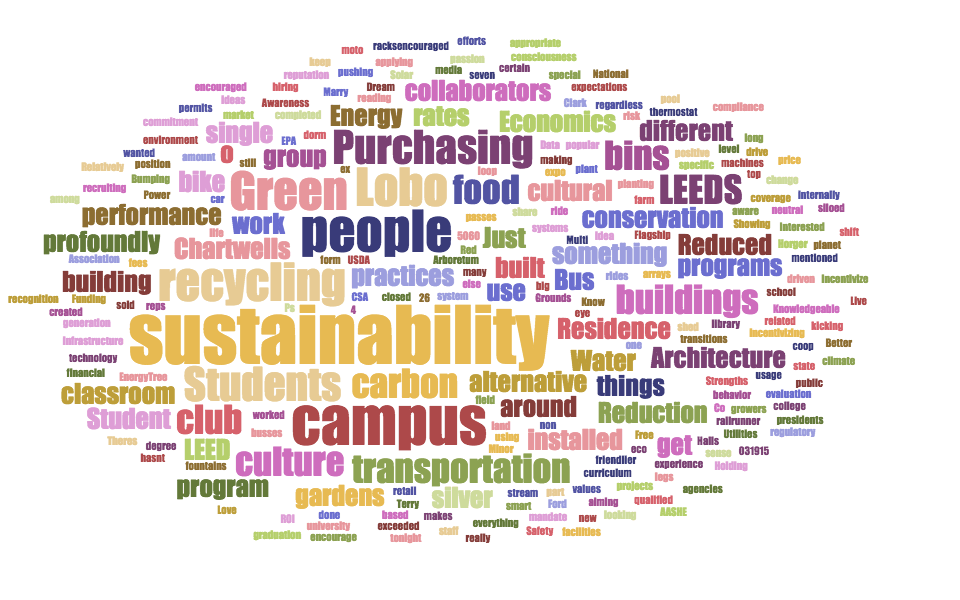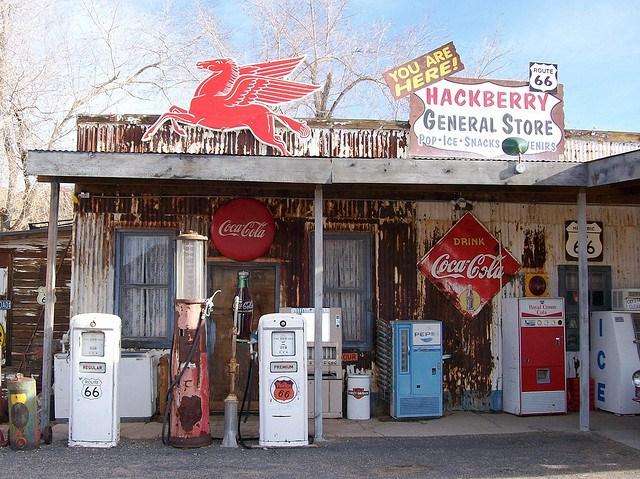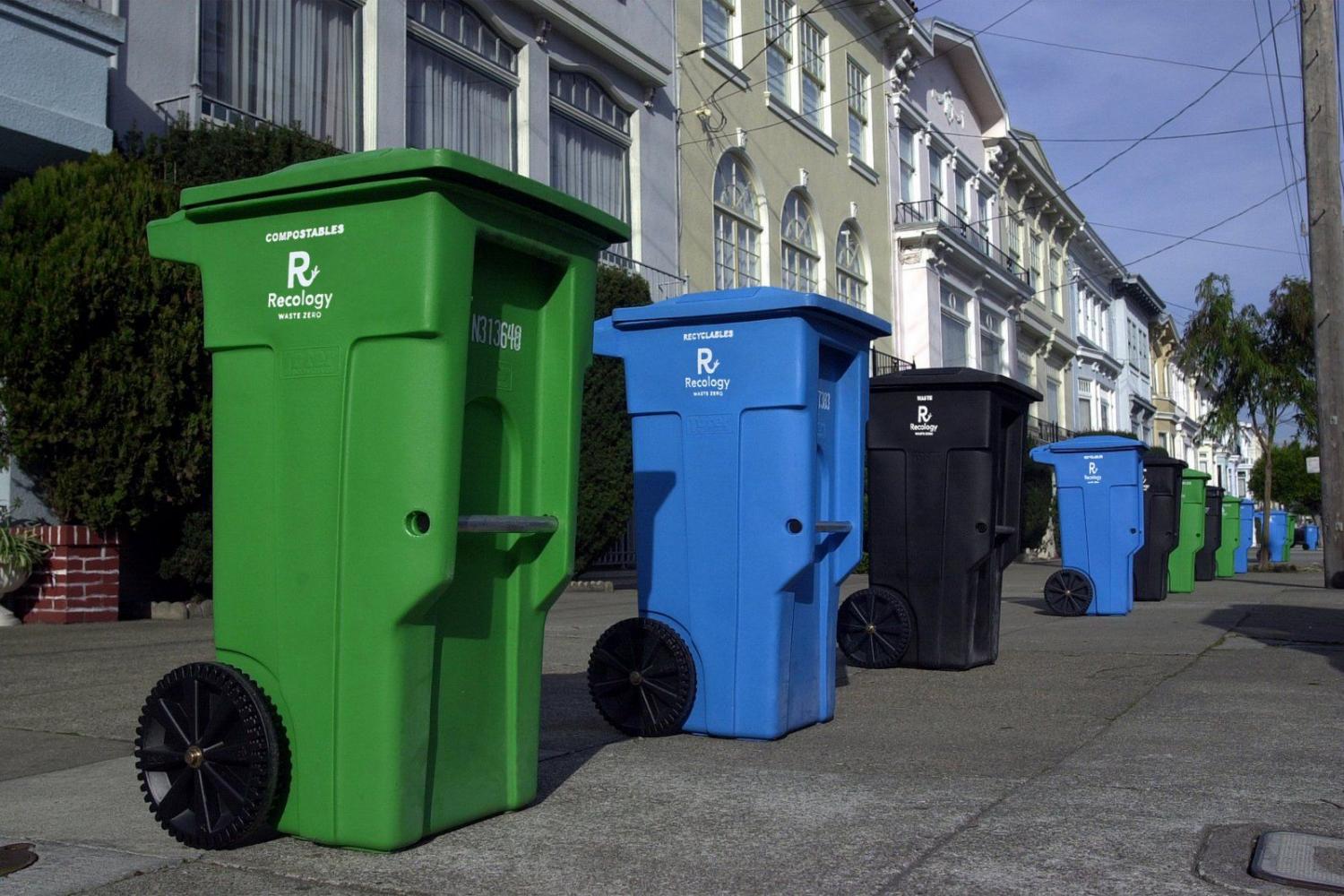5 Questions to Ask Before Labeling a Business with the 'S-Word'


By Earl W. Shank
We tend to call everything 'sustainability,' for the lack of a better term to describe the wide cross-section of business activities we deem 'good.' That does not make each fairly virtuous act sustainable. It doesn’t. Most of the mislabeled 'good' just compares favorably to a more deplorable, drummed-up alternative; it might be more bearable or better for the environment, but advantageous comparisons do not equate to sustainability. Consumers fall so hard for the romantic concept that at times the term is little more than nebulous and trite.
More simply, few business activities deserve the ultimate acknowledgement that many readily, and without rigor, deploy. So, where does that leave the pool of consumers regularly bombarded with ostentatious claims? Here are five questions to ask before acknowledging business actions, behaviors or practices as sustainable.
1. Legal compliance
Does a regulatory body (i.e. local, state, or national government) require a low threshold of a certain positively-viewed behavior? It is not sustainable to do a little bit of good for obligatory legal purposes. It does not detract from the inherent value if legislated, but when the action meets and does not exceed the standard, the motivation to be sustainable is revealed to be weak. Partial sustainability in order to meet legal requirements should not be celebrated in the same manner that self-motivated, continuously-improving behavior deserves.
2. Social washing
Did this behavior actually take into consideration the long-term wellbeing of people, or did it merely take into consideration the employment of people in a specific geographic area? For a long time, labels that read “made in America” signified a level of unmatched manufacturing quality and meant employment for the same person that might be your neighbor. That time has come and gone, and “made in America” neither ensures quality nor fair, just, or even fully legal labor conditions. Consumers need to pry into what actually contributed to a product coming into existence and not just trust signals like “made in America” to ensure the production was done in a sustainable manner.
3. Lesser of two evils
Does this action merely correct an egregiously unsustainable behavior? Any lesser of two evils will move the needle a little bit in the right direction, but movement does not equate to actual sustainability.
This is not to say that steps should not be taken in the right direction at every opportunity, but the size of the steps and foundations the steps lay need to be equally taken into consideration when determining whether change should be celebrated. It is often the case in greenwashing that an inherently unsustainable action will be swapped for a slightly better alternative.
4. Disregard for systems change
Are we compartmentalizing the system so that an unsustainable systems-wide behavior is understood to be sustainable in a vacuum? Sustainability is about transition toward behaviors that will allow the same quality of life to be maintained into the future. We cannot expect leaps and bounds overnight. When unrealistic expectations arise, sometimes the least sustainable behaviors are exhibited.
For example, someone downstream in the supply chain could immediately become more sustainable by eliminating a relationship with a supplier deemed to be causing unnecessary harm. Immediately, such a business could claim victory for the green movement, ignoring the social implications of lost jobs and impact on the other business. Consumers are, unfortunately, attracted to such rash actions and find the tendency to show an undeserved attentiveness to the sustainability movement.
5. Wealth sharing
Does the action involve the poor only because they have some desirable trait? When business involves low-income communities or developing nations, it tends to be marketed as a victory for social inequity. However, when the poor are only included in business activities because of cheap labor, or to appropriate their culture, it does little for the long-term sustainability of that group of people.
Cheap labor that just so happens to involve one group of low-income people is quickly traded to the next group who can continue to offer low prices or who can offer lower prices. If business is truly interested in working to improve the wellbeing of a group of people, then it should be looking to do so in a way that wages can be increased over time to meet and exceed basic needs. The social component of sustainability should go beyond approaching inequality in social standards and actually engage the issue.
Sustainability is a systems-wide approach to ensuring the quality of life for future generations. It is not the picking and choosing of low-hanging fruit. There is a lot of good going on in the world, and increasingly the good has corporate roots. We need to challenge corporations to continue to do right by consumers and to build sustainability as part of their actual business operations and not just their marketing.
Image credit: "Sustainability Strengths Word Cloud" by UNM Office of Sustainability
Earl W. Shank is the Sustainability Coordinator at the University of New Mexico’s Office of Sustainability. His work entails developing strategy to engage university stakeholders about how to incorporate sustainable solutions.
BLOG: Why does health get forgotten in health and safety?


You can easily spot the colleagues wearing a personal activity monitor, writes CSC's CR lead Paula Sullivan. Whether they’re a Fitbit fanatic or a devotee of another brand of device, they’re the people marching on the spot while they wait for the coffee machine. They’re also the people most likely to forgo email in favour of walking across the office to speak to you in person. Better still if the walk involves a few flights of stairs.
Having started my career in health and safety, I’m perplexed as to why health is often the poor relation. Safety is of course vital but the health and wellbeing of your workforce is just as important.
The logic of prevention has been accepted wisdom for many years. In 1993, the former US Surgeon General C. Everett Koop published a paper that stated “preventable illness makes up about 70 percent of the burden of illness and the associated costs.”
Sound business sense
Prevention is of course common sense, but it has wide-reaching economic benefits too. In their latest report, the Health and Safety Executive in the UK estimate that 23.5 million days were lost last year due to work-related ill health at an economic cost to the country of £14.2billion.
Support for corporate wellness programs appears to be on the rise. Not only do employers understand the moral case for investing in their people, but there is a sound business case to support it too.
A meta-analysis of the literature by Baicker in 2010 found that in the US, medical costs fall by about $3.27 for every $1 spent on wellness programs. The same study found that absenteeism costs fall by about $2.73 for every $1 spent.
There are other benefits too for the employer including improved rates of absenteeism, employee engagement, morale and productivity. So whether its team activity challenges, workplace health checks, walking clubs or providing healthy snacks, investment in health always pays dividends.
Blog post done, it’s now time to speak to my colleague in accounts, which, by my reckoning will earn me 182 steps and two flights of stairs.
Paula Sullivan leads IT services organisation CSC's CR Program at a global level, with 13 years experience in driving forward a winning corporate strategy for Corporate Responsibility leading to a platinum ranking in the U.K.'s BITC CR Index in 2013 and CSC globally achieving a place in the Top 100 Best Corporate Citizens List 2014 and Most Improved Citizen Ranking in 2014.
You can read more of her CR blogs here.
Automated Parking and EV Charging, Coming Soon to Your Parking Lot


Automated parking and electric vehicle charging may sound like a futuristic gimmick, but according to Volkswagen the technology is proven and the reality is closer than you may think. As for the gimmickry, these automated systems have the potential to make parking facilities more convenient, efficient and safe, and that could yield some significant bottom-line benefits for businesses that adapt to the new technology.
The V-Charge automated parking and charging initiative
Volkswagen is a partner in V-Charge, a European initiative aimed at accelerating the development of automated parking systems.
The goal of V-Charge (short for Valet-Charge) is to help make urban transportation systems more efficient. The ripple effect is to encourage greater use of mass transit by vehicle owners, by making parking more convenient.
In addition, by offering the convenience of automated electric vehicle (EV) charging, the new system could provide another incentive for auto buyers to choose an EV.
The typical example cited by V-Charge is a park-and-ride commuter who can conveniently exit his or her vehicle at the entrance to a train station instead of having to find a parking spot and walk to the train station.
With automated driving, the vehicle can go off and find its own parking spot.
To ice the cake, if it is an electrical vehicle in need of a charge it will go to a charger-equipped spot. Once charged, the EV will find a regular spot to park in for the rest of its stay, leaving the charger free for another vehicle.
The key to getting the system into real-world use sooner rather than later is to demonstrate it in a controlled environment, such as a college or corporate campus. To that end, the V-Charge consortium has set this four-year goal for systems in Zurich, Switzerland, and Braunschweig, Germany:
"... The demonstration and implementation of a fully operational future car system including autonomous local transportation, valet parking and battery charging on the campus of ETH [Swiss Federal Institute of Technology] Zurich and TU [Technical University] Braunschweig. The envisioned key contribution is the development safe and fully autonomous driving in city-like environments using only low-cost GPS, camera images and ultrasonic sensors."
As described by V-Charge, the technology is relatively inexpensive, in addition to being readily available. The other piece of the puzzle is another ubiquitous piece of technology, the convenience of mobile communications, in the form of a V-Charge app. The app, among other functions, enables the vehicle owner to call the vehicle to a convenient point for pickup.
VW and automated parking
As a partner in the V-Charge initiative, Volkswagen is responsible for providing the test vehicle and developing on-board systems including safety and control, monitoring of the surrounding environment, object recognition, and automated parking.
Earlier versions date back to 2005. Today's iteration is described in a recent VW press release (break added):
"A dense network of sensory devices enables autonomous operation of the V-Charge test vehicle, which is based on a Volkswagen e Golf1. Four wide-angle cameras and two 3D cameras, twelve ultrasound sensors, digital maps and the so-called 'Car2X' technology for the vehicle's communication with the infrastructure ensure that the vehicle's surroundings are reliably detected and recognized."Pedestrians, vehicles and obstacles get identified, parking spaces recognized and measured and then this stream of data is put together in real time to form an overall picture – the task that the technical 'sensory organs' have to fulfill is complex and extremely varied."
Developing these onboard vehicle systems is the hard part. Once they are fully developed, automated parking and EV charging could piggyback on the existing parking infrastructure, with relatively few adjustments.
Automated parking and charging for business
That leads to the applicability of V-Charge systems to the business sector. Volkswagen notes that valet parking already has wide appeal as a convenience. By introducing a higher level of efficiency, automated systems could provide the same service while reducing emissions from gas-fueled vehicles, and encouraging the use of electric vehicles.
Automated park-and-charge systems could also become part of a company's incentive toolkit for attracting top talent, and for enhancing mobility on corporate campuses.
Automated parking and driving
Automated parking could also help to balance out an unwanted side effect that could emerge as driverless systems enter the mass market.
TriplePundit has noted that driverless systems could provide an incentive for more drivers to use individual cars rather than mass transport. The result, whether the car is gas-fueled or electric, will be an increased demand on energy resources, along with the reduced efficiencies that result from traffic congestion -- unless drivers have an incentive to use park-and-ride mass transit, such as envisioned by V-Charge.
Driverless systems and automated parking also fit seamlessly with the trend toward electric vehicle integration into individual lifestyles, Ford's MyEnergi system being one good example.
Image: Courtesy of Volkswagen.
The Quick & Dirty: The Future of Business is in the Past


I breathe. Mostly oxygen but some other stuff too. I do this constantly. That tells you everything you need to know about me, right? Oh yes, I also have arms, legs, eyes and all that body stuff we humans are so into. Would that make you date me? Of course not. Why? Because it tells you nothing about me as a person. It doesn't tell you anything about my purpose, my values, or my impact on you and everyone else.
Now imagine you’re a business saying that its reason for being is to maximize profits for shareholders. That tells me you’re a business that sells stuff to make a profit. But do I feel loyal to you and want to have a long-term relationship engaging with your products or services based on that? No. Why should any customer care about your profits when you care nothing about what they need? This might come as a shock to you, but no one buys your product because you want to make a profit.
In order to find the purpose of business, we must look to the past.
Why do you think millennials care so much about values? Because businesses somehow lost their reason to exist, and now people are starting to look for the values they share with your company because it is mostly absent. Back in the "good old days," it wasn't a question to ask. It wasn't something to look for. It was right there – expressed by the handshake of the store owner, in the active role that a business took to ensure that community’s overall welfare and progression. You, Mr. Business, started and succeeded because you understood what your customers and community needed. And that connection translated into a strong and loyal relationship where you looked out for each other.
Fast forward to today. We live in a world where we are surrounded by snake oil sellers or businesses that tell us their purpose is to maximize shareholder value. You, Mr. Business, have lost your way because you started to focus more on yourself than the community that ensures your financial success. You’ve lost your purpose. And, with 42 percent of Americans reporting they would pay extra for products and services from companies committed to positive social and environmental impact (and even more outside of the U.S.), you’re missing a huge opportunity.
But don't worry, we can still date. All we need to do is find that spark that started it all -- that space where your purpose and your social impact made you the perfect date. To do that, you must get back to your roots to remind yourself why you exist. I think you will find that it wasn’t so much about money to begin with, but the love of doing or creating something that would ultimately help others. And by doing it, you help yourself. Profits with impact.
There is a very scary part in this search for meaning. You might go back to your roots and realize that you just simply don’t have meaning in the world of today anymore. You might be selling snake oil instead of the goodness from where you started. But if you dig deep enough into those roots, you will find the answer of why you are still relevant to the world of tomorrow. Take coal as an example. It was a great way to energize the development that society so desperately needed in order to advance. Who knew that those same fires would slowly choke us today? But it was never about coal – it was about providing the world with the energy to advance. Go back to those roots of your social impact and reinvent your products to be true to your roots. Be that business with a social impact that matters to society again.
Brands with meaning: a novel idea as old as the roots of business itself. Now that is a social impact we can all applaud. Go back and advance.
Image credit: Flickr/mlhradio
Adidas Designs Sneakers Made Entirely from Ocean Waste


Adidas is giving a whole new meaning to the old adage, "One man's trash is another man's treasure." The eco-conscious sneaker brand recently released an innovative pair of kicks made entirely of recycled plastic ocean waste. The shoes are the product of an ongoing partnership with Parley for the Oceans, an initiative dedicated to raising awareness and combatting plastic pollution in the oceans.
“The conservation of the oceans is a cause that is close to my heart and those of many employees at the Adidas Group” said Eric Liedtke, executive board member for Adidas Group. “By partnering with Parley for the Oceans we are contributing to a great environmental cause. We co-create fabrics made from Ocean Plastic waste which we will integrate into our products.”
Parley for the Oceans is an organization in which creators, thinkers and leaders come together to raise awareness about the state of the oceans and to collaborate on projects that can protect and conserve them. As a founding member, Adidas supports Parley for the Oceans in its education and communication efforts and its comprehensive Ocean Plastic Program that intends to end plastic pollution for good.
Together, the Adidas Group and Parley for the Oceans will implement a long-term partnership program that is built on three pillars: communication and education, research and innovation, and direct actions against ocean plastic pollution. The partnership is an example of the Adidas Group’s open-source innovation approach: to engage with partners, crowd-source ideas and co-create the future of the industry. Among others, this collaboration will accelerate the creation of innovative products and integration of materials made of ocean plastic waste into Adidas’ product line starting in 2016.
"Our oceans are about to collapse, and there is not much time left to turn it around. Nobody can solve this alone. Everyone has to be part of the solution. And collaboration is the magic formula,” said Cyrill Gutsch, founder of Parley for the Oceans.
“We are extremely excited about this partnership. There is no other brand that carries the culture of collaboration in the DNA like Adidas. Together, we will not only focus on creating the next generation of design concepts, technologies, materials and products. We will also engage consumers, athletes, artists, designers, actors, musicians, scientists and environmentalists to raise their voice and contribute their skills for the ocean cause.”
Adidas has long been a leader in the sustainable fashion movement. This partnership builds on the company’s strong track record in product sustainability, one of the key pillars of the Adidas Group’s sustainability strategy. Constantly looking into new and smarter ways to make its products better, this collaboration will also further strengthen the company’s ties with its consumers by allowing them to be part of the solution via retail and future activations. As a first action, the adidas Group has also decided to phase out the use of plastic bags in its own retail stores.
“In 2014 we brought sustainability to our own stores when we introduced our first 'green' retail concept in our HomeCourt store in Nuremberg, Germany," said Frank Henke, VP of global, social and environmental affairs for Adidas Group. "The partnership with Parley for the Oceans has already led us to reassess some of our business practices. Stopping the use of plastic bags in our stores is a primary example of this and the right thing to do.”
The Adidas Group’s sustainability strategy is rooted in the four pillars of people, product, planet and partnership. The company is dedicated to positively influencing the lives of its employees, factory workers and people living in the communities where the business operates.
Adidas is on a mission to find better ways to create products – mainly through innovation, increased use of more sustainable materials and efficiencies. In 2012, the company introduced its “dry dye” collection, making it the first in the market to introduce a method of dyeing clothing without the use of water. It is also committed to using 100 percent sustainable cotton in all products by 2018.
When it comes to the planet, the company is dedicated to reducing the environmental footprint of both its own operations and suppliers’ factories. Its Green Company Initiative saves water, paper and energy. The vision of the initiative is to become a zero-emission company by embedding environmental best practices in everything the company does, maximizing environmental efficiency gains and harnessing consumers' passion for a greener planet.
Adidas also takes a unique approach to nurturing partnerships by engaging with critical stakeholders and collaborating with partners to improve the industry. In addition to Parley for the Oceans, the company has developed partnerships with initiatives such as the Better Cotton Initiative and the Sustainable Apparel Coalition.
Over the years, the Adidas Group has been honored for its innovative and practical approach to sustainability. The company ranks third among the Global 100 Most Sustainable Corporations in the World. Looking ahead, the company plans to focus on driving self-governance in the supply chain, accelerating strategic initiatives and engaging with consumers around the topic of sustainability.
Image credit: Adidas Group
Educated Girls Uncover Unmet Design Needs


By Elizabeth Schaeffer Brown
Flip through any fashionable design annual, and you’ll read of something called “Human Centered Design.” The practice of HCD places emphasis on user testing, interviews, field research and high-touch iterations to solve problems. As contemporary design, and especially sustainable design, increasingly comes to rely on HCD-inspired techniques, greater attention is being paid to social features.
Diana Sierra and Be Girl have developed their own version of the process, which they call Humanity Focused Design. Despite years of experience designing products for brands like Nike and Panasonic, Diana Sierra felt the need to change course. She enrolled in the Sustainability Management program at the Earth Institute – Columbia University seeking to develop better products, not only those that boosted the bottom line but products that where responsible to the environment and the people. That was the drive that gave way to Be Girl, an idea to create “extremely affordable and high-performance products” that focus on "women’s and girls’ autonomy and confidence” through design.
Sierra first came up with the idea of developing a new kind of sanitary napkin after conversations with girls and women in rural Uganda as part of a U.N. Development Program project. She learned that many young women, lacking access to any feminine hygiene products, would miss school when they began menstruating. Her solution was a pad/underwear that may be fitted with almost any locally available absorbent material. In fact, Sierra’s original prototype was assembled from fabric she re-used from an umbrella and mosquito net.
This “open architecture” approach to design mirrors how Be Girl’s resourceful design approach delivers maximum impact with minimal materials. By working closely with a variety of communities to co-create, girls are empowered to develop products that not only responded to their immediate needs, but also reflected their aspirations.
Talking about menstruation is not an easy thing, especially when it is taboo or culturally inappropriate to even broach the topic. But “when a stain of blood is standing between a girl and her chance to a reach for a better future, you don’t need to be a designer to figure out that the minimum intervention to level the playing-field for girls is to make appropriate menstruation management solutions as part of the toolkit for girls to stay mobile pursuing and reaching opportunities," Sierra said.
Teaching girls to form a new relationship with their bodies is at the heart of BeGirl’s design efforts. Through a sustained relationship with the designers, girls learned how to express their needs through feedback. This would often spark a discussion about other problems that needed fixing. For instance, the lack of girls’ bathrooms in the schools in Uganda pointed to larger infrastructure problem. Once a design discussion begins, it can lead to reassessing the environment and create a sort of domino effect. Humanity Centered Design may start by solving apparently “small” problems, but the aim is big. In the case of Be Girl’s sanitary napkins, Sierra explains, “We are not talking about rocket ships, we are talking about pads. Yet they both have the same effect on people; they take you places.”
Simple solutions can be revolutionary and truly worth giving it all, because every girl deserves the right to manage her body with dignity, and to have access to an education as well as all the opportunities that come with having mobility and autonomy, key components to reach the immense potential that is in every human being.
Image credits: Be Girl
Elizabeth began her career introducing leading international brands, like Sony Ericsson, into the North American market. She co-founded Studioe9 in 2004, which functioned as an independent digital laboratory servicing global advertising agencies including IRIS Nation and TBA Global. At StudioE9, Elizabeth emerged as the driving force behind the creation of some of the first public/private partnerships of their kind such as Maiden Nation. Her efforts focused on job creation for women in developing countries through ethical fashion.
The Sufficiency Economy Philosophy: Corporate Sustainability Meets Karma


By Anum Yoon
In the corporate world – and even in our personal lives – “more” is frequently considered better. When a company meets its benchmarks and goals, it should set new, higher goals. When profits reach a target level, the company should adjust its strategy to increase those profits. It’s a cycle that has always been around and has only grown with the onset of a global economy.
What if there was another way?
The effects of the 'more is better' economic philosophy
Many people benefit from a “more is better” outlook on the corporate economy. Jobs are created, prices drop as competition increases and futures for those involved with the economy are secured.
This is where many corporations rest their cases. The more successful their brands become, the better off everyone will be in the long run, right? According to a different philosophy, that of the sufficiency economy and corporate sustainability, this view is based on greed.
When an individual or corporation is always searching for more, that search is routed in greed. By definition, greed is considered a “sin of excess” just like gluttony. According to Buddhist principles, the same greed that builds the sufficiency economy closely corresponds with the Buddhist idea of desire. In this realm, desire is directly related to becoming over-attached to the material world and its pleasures. Because of this, greed prohibits an individual – or corporation, in this case – from being satisfied with current conditions.
This greed leads to a depletion of resources, a dysfunctional economy and a lack of balance. While corporations may see great success, natural resources, individuals and smaller businesses around the globe could suffer long-term effects.
How the sufficiency economy philosophy counteracts 'more is better'
King Bhumibol Adulyadeg of Thailand introduced the philosophy of the sufficiency economy – based on Buddhist principles – to the people of Thailand on Dec. 4, 1997.King Adulyadeg’s philosophy is rooted in balance – a balanced way of living and of doing business. Centered around three principles – moderation, reasonableness and self-immunity – and coupled with morality and knowledge, each applied at a corporate level, the philosophy presented an alternative to corporate greed, allowing corporations to grow without the common negative effects of business.
Recently, Sirikul Laukaikul, a Bangkok-based brand strategist put on a presentation related to the sufficiency economy in San Diego, California. Laukaikul took the sufficiency economy to the next level by describing “karma marketing,” based on the principle of moderation and responsible behavior.
According to Laukaikul, karma marketing doesn’t mean suffering, limiting growth or forgetting about corporate success. Instead, it’s about companies working to extend themselves to ensure growth and profits while providing for others now and into the future. It’s about understanding when a corporation has enough, and being satisfied in that place.
The potential benefits of karma marketing
The sufficiency economy fits in with the ancient principle of karma. Karma is the idea that for every action there is a reaction, like the ripples created when a stone is thrown into a body of water. When corporations forget about the rest of the world and focus only on growth, there’s a lot to be lost. However, when corporate mindsets change, the idea of “enough” is accepted and those at the top start looking out for those at the bottom, the ripple effect is positive.
Karma marketing leaves room for new growth. It takes care of those who struggle to take care of themselves and protects the planet from the negative consequences of corporate greed. It leaves room for global connectivity and positivity, instead of the negativity to which we are accustomed.
Just like the sufficiency economy itself, if a single brand focused on karma marketing, the ripple effects could be great. Could karma marketing influence the future of our world? Only time will tell; but, it must start somewhere.
Image credit: LibreShot
Anum Yoon is a writer who is passionate about personal finance and sustainability. As a regular contributor to the Presidio Graduate School’s blog, she often looks for ways she can incorporate money management with environmental awareness. You can read her updates on Current on Currency.
Howzat! EHRC teams with ECB to boost diversity in cricket


The Equality and Human Rights Commission has teamed up with the England and Wales Cricket Board (ECB) to get thousands of women, girls and people from ethnic minority backgrounds involved in cricket.
This is part of a new initiative which also aims to provide better access to cricket grounds for disabled people.
The Commission’s initiative aims to address low participation from diverse groups in cricket by promoting best practice on how to tackle discriminatory behaviour across all functions and services and ensuring teams and spectators reflect their communities.
These objectives will be achieved by cricket clubs taking specific actions such as running sports camps for women, girls and ethnic minorities, recruiting more staff to run sessions from those groups, providing support and mentorship for these groups, and linking in with schools, local authorities and regional sports boards to promote their activities and encourage participation.
The Commission’s funding (£450,000) will help ECB recruit 540 new ethnic minority coaches, provide opportunities for 7,500 women and girls to play cricket across 100 cricket clubs and audit 16 first class county cricket grounds for disability access.
Chris Holmes, former champion Paralympic swimmer and Disability Commissioner at the Equality and Human Rights Commission, said: “Cricket is a fantastic way of bringing people together whatever their backgrounds and providing great health benefits. Everyone should have the same opportunity to get involved in the game regardless of their ability, gender or social background.
“Big and small clubs are uniquely placed to help tackle inequality in sports due to their links into local communities. Sport inspires young people, and not just with dreams of becoming an athlete; it can influence how they approach everyday decisions and equip them with life-changing skills."
Picture credit: © Albund | Dreamstime.com - Cricket Wickets Photo
3p Weekend: 8 Companies Going Cradle-to-Cradle


With a busy week behind you and the weekend within reach, there’s no shame in taking things a bit easy on Friday afternoon. With this in mind, every Friday TriplePundit will give you a fun, easy read on a topic you care about. So, take a break from those endless email threads and spend five minutes catching up on the latest trends in sustainability and business.
Once dismissed as something of an unachievable hippie fantasy, the circular economy has emerged as a key talking point in the sustainability set. Invented by Walter R. Stahel in the 1970s and popularized by William McDonough and Michael Braungart in their 2002 book of the same name, the cradle-to-cradle framework is a lynchpin of the circular economy conversation in the 21st century.
In cradle-to-cradle production, all material inputs and outputs are seen either as technical or biological nutrients. Technical nutrients can be recycled or reused with no loss of quality, and biological nutrients composted or consumed.
Founded by McDonough and Braungart in 2010, the Cradle to Cradle Products Innovation Institute took the concept to the next level by developing a third-party standard through which companies can continually develop their products.
According to the Institute, the Cradle to Cradle Certified Product Standard looks at a product through five quality categories — material health, material reutilization, renewable energy and carbon management, water stewardship, and social fairness. A product receives an achievement level in each category — Basic, Bronze, Silver, Gold or Platinum — with the lowest achievement level representing the product’s overall mark. Every two years, manufacturers must demonstrate good faith efforts to improve their products in order to have them re-certified.
The requirements for the certification are tough to achieve, and only a select few companies have made the grade as of yet. This week we tip our hats to eight of those companies that are leading the charge to a truly circular economy.
1. Method
Thanks to nontoxic and biodegradable ingredients, Method has achieved C2C Gold certification for several of its household cleaning products, including its 8x Laundry Detergent, All-Purpose Natural Surface Cleaner and bathroom care product group. C2C has yet to award Platinum certification to any product, so these Gold-star items are basically the market front-runners.
Although Method made its first big splash by selling hand soap in bottles made from recovered ocean plastic, these C2C certifications apply only to its product formulations, not its packaging.
2. Aveda
Thanks to its preference for natural ingredients, Aveda was able to achieve C2C Gold certification for 10 of its product formulations. With post-consumer recycled milk jugs making up a minimum of 80 percent of its bottles, the packaging on these products also received C2C Silver certification -- making Aveda a clear leader in the hair care industry.
3. JBC Belgium
JBC Belgium is Belgium’s first fashion store to launch a Cradle to Cradle Certified Basic collection. This is the first step in its long-term plan to develop clothes whose materials can be reused without any quality loss.4. Lauffenmühle
After years of development, Lauffenmühle now offers an innovative textile yarn that's ideal for work wear (think: scrubs and service uniforms). Up to now, mainly cotton and polyester blends were used in the industry -- a big no-no for for cradle-to-cradle because it necessitates downcycling at end-of-life.
Lauffenmühle's new textiles consist of a blend of cellulosic fibers derived from FSC-certified wood and biodegradable synthetic polymers made from plants not used for food. All raw materials, ingredients, chemicals and dyes are safe for biological systems and are C2C certified at Gold level.
5. Carlsberg Group
Best known for its namesake pilsner, the Carlsberg Group is making moves toward a cradle-to-cradle system for its packaging. So far, the company has achieved C2C Bronze certification for its Carlsberg lager and Somersby cider cans sold in the U.K. market.
6. Herman Miller
Herman Miller's Aeron chair has become synonymous with comfort and sleek style in the office. But did you know it's also environmentally sustainable?In addition to its well-known ergonomic and functional qualities, Bill Stumpf and Don Chadwick designed the Aeron chair to be sparing of natural resources, durable and repairable, and constructed for ease of disassembly and recycling, according to the Institute. The C2C Silver certified Aeron is up to 94 percent recyclable, contains up to 64 percent recycled content, and has no PVC.
7. Shaw Industries
Shaw Industries, the world's largest carpet manufacturer, has been producing Cradle-to-Cradle certified products for more than a decade, and they now make up 64 percent of the company’s sales. At the heart of the company's success is Nylon 6, the only 100 percent closed-loop, cradle-to-cradle fiber currently available in the carpet industry.Evergreen Nylon Recycling, Shaw’s nylon recycling operation in Augusta, Georgia, employs patented technology that converts post-consumer Nylon 6 carpet into caprolactam, the building block of this fiber. This cycle can be repeated over and over again without the loss of any aesthetic or performance properties. The company has recycled 100 million pounds of carpet in the last 12 months, creating new fibers and keeping post-consumer carpet from entering the landfill.
8. gDiapers
Moms looking for a sustainable solution to one of parenting's stinky situations may be happy to learn that green diaper brand gDiapers is even more eco-friendly than they thought. gDiapers disposable inserts were the first consumer packaged good to be C2C certified (Silver) and the first to feature the Cradle-to-Cradle Certified logo on packaging. It's also the only diaper brand to be C2C certified.
The disposable inserts tuck inside reusable diaper covers called gPants -- creating a part reusable, part disposable solution. The disposable inserts break down in a home compost pile in 3 months While gDiapers ran into trouble with the FTC over biodegradability claims, and there are no easy answers in the world of diapering, the C2C designation rightly marks gDiapers as one of the greenest options out there.
Image credit: Cradle to Cradle Products Innovation Institute
The ROI of San Francisco's Zero-Waste Program


This article is part of a series on “The ROI of Sustainability,” written with the support of MeterHero. MeterHero helps companies and organizations offset their water and energy footprints through consumer engagement. To follow along with the rest of the series, click here.
The world has a waste problem. Every year in the United States (the world’s top waste producer), Americans create 254 million tons of trash – 167 million tons of which end up in landfills. Much of this waste is actually valuable.
Seizing an opportunity to conserve resources, reduce environmental impact and create jobs, the city of San Francisco set a goal in 2002 to achieve zero waste by 2020. Through its three-bin collection system and partnerships with local organizations to raise awareness of waste reduction efforts, the city has already reached 80 percent waste diversion in commercial and residential buildings – and better yet, has found that achieving zero waste can be as good for Mother Earth as it is for municipal wallets.
Trash and treasure
Since its launch, the city’s zero-waste program created policies, financial incentives, and significant outreach to its 850,000 residents and business owners to promote the use of its black-green-and-blue bin system to separate trash from treasure.Unlike trash, items that are composted and recycled create a return for the city. Recyclables are baled and sold to their respective markets: Scrap metal and certain plastics, for example, are often sent to Asia and imported back in the form of new products, and compostables are processed and transformed into nutrient-rich fertilizer, which is sold to local farms. Landfill waste, on the other hand, costs money.
These efforts extend to materials that are harder to recycle, like textiles. As part of its goal to reach zero waste, the city announced a partnership with I:CO last year to facilitate the reuse and recycling of clothing, shoes and textiles within retail stores, residential buildings and donation spots. San Francisco has also partnered with local employers and nonprofits to educate and engage citizens in the process.
“Textiles are one of the top materials that we waste,” said Jared Blumenfeld, former head of the San Francisco Department of Environment and current EPA Region 9 director, in a statement. “In fact, San Franciscans throw away more than 4,500 pounds of textiles each hour to the landfill. This is an unbelievable amount of preventable waste, and we’re excited to see San Francisco companies coming together to reverse this trend."Textile recycling not only conserves raw materials and saves on landfill costs, but when that waste is transformed into new products, such as wall insulation, it also creates new revenue streams.
According to the city’s Department of Environment, the zero-waste program is “funded solely from revenue generated through refuse rates charged to customers” – which range from $25 to $35 a month for a typical household, depending on the size of the black trash bins. Therefore, it’s not an added cost to city dwellers beyond what they were already paying.
Green jobs
Another benefit for local residents is that the program helps create green jobs. The city’s Environment Now green careers program prepares workers for the green economy and helps them access jobs that contribute to the city’s zero-waste goals.Waste diversion-related green jobs are not only positive for the environment, but they also fuel the economy. According to the Blue Green Alliance, the U.S. would gain 1.1 million new jobs if the nation actively diverted 75 percent of its trash from landfill. San Francisco currently employs about 1,050 residents and actively recruits and trains new employees.
Beyond recycling
While San Francisco’s zero-waste goals and efforts are laudable, one critique is the city’s emphasis on the last “R” of the common phrase “Reduce, Reuse and Recycle.”Jacquie Ottman, green marketing pioneer and founder of the waste reduction community WeHateToWaste, sees greater value in educating the public on the merits of reducing overall consumption and reusing products, rather than the consumption-centric focus of recycling.
“The greenest product is the one that already exists,” Ottman told 3p. “We need to reduce and reuse – that means don’t waste. We are missing an opportunity to reinforce that message with consumers.”According to WeHateToWaste, repairing, repurposing and sharing products is the true key to a no-waste mindset. When we find creative ways to use what we already have and reduce our consumption, we get closer to saving natural resources and reducing costs.
The point is: Let’s not pat ourselves on the back too quickly just for recycling that plastic bottle or composting yesterday’s food scraps. Let’s find ways to truly reduce impact by avoiding the creation of waste altogether.
That’s how we can all get to zero waste – and get a nice return on our investments.
Image credit: San Francisco Department of Environment